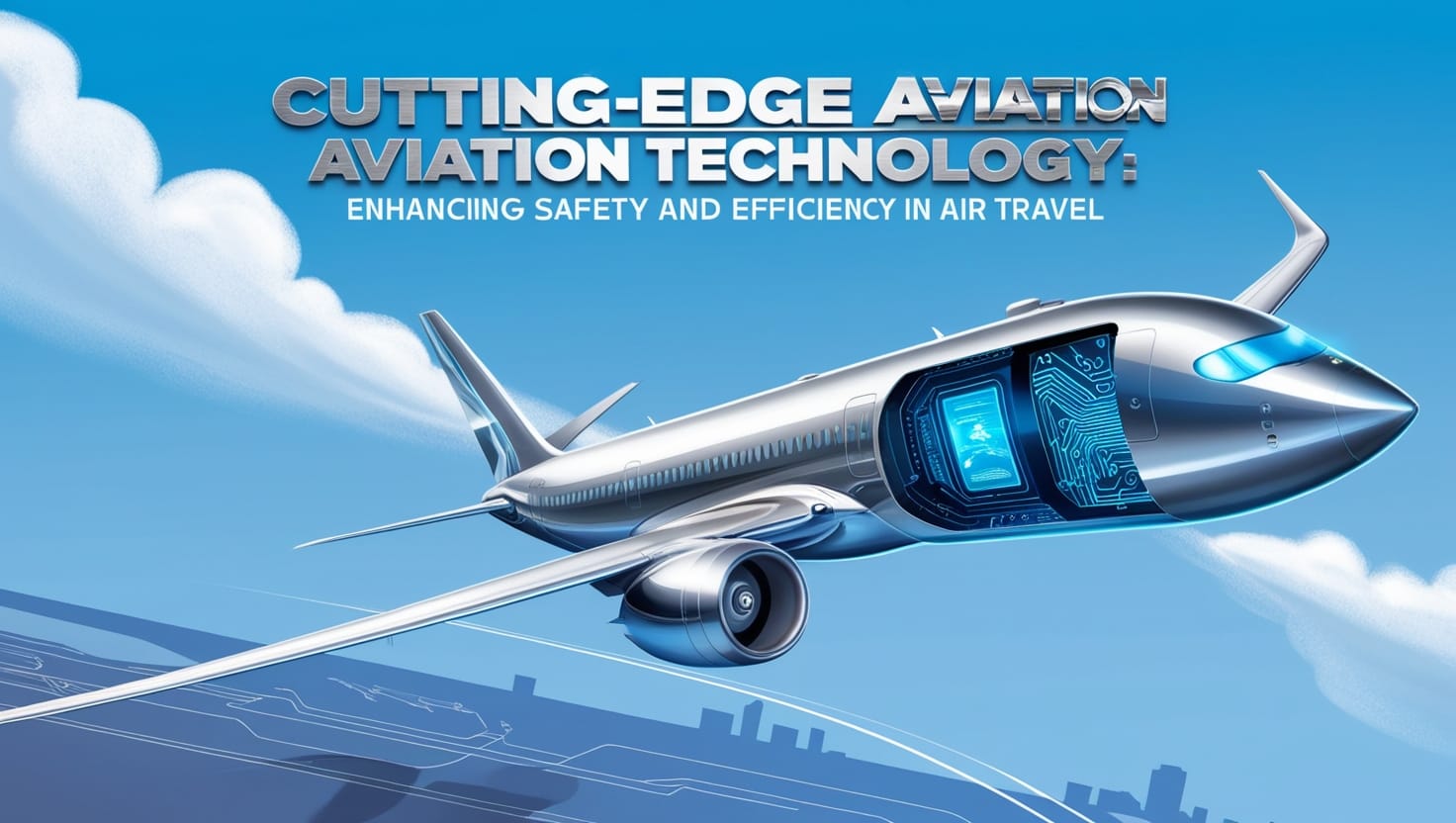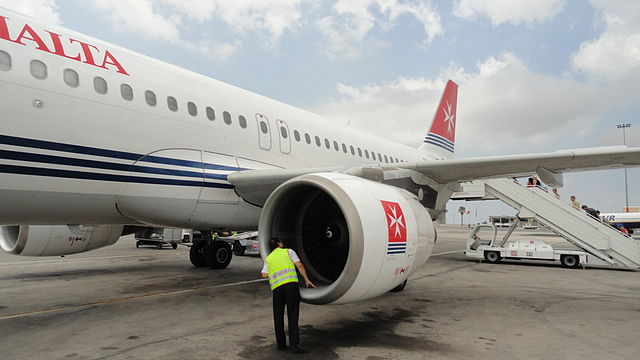
Cutting-Edge Aviation Technology: Enhancing Safety and Efficiency in Air Travel-In the ever-evolving landscape of air travel, cutting-edge aviation technology is playing a crucial role in enhancing safety and efficiency. As the aerospace industry faces increasing demands for sustainability, speed, and reliability, innovative technologies are being integrated into every aspect of aviation. Let’s explore the advancements that are revolutionizing air travel and making it safer and more efficient for passengers and airlines alike.
1. Advanced Flight Control Systems

One of the most significant innovations in aviation technology is the development of advanced flight control systems. These systems utilize sophisticated algorithms and sensors to assist pilots in maintaining optimal flight conditions. By automatically adjusting various parameters—such as altitude, speed, and direction—these systems help prevent accidents caused by human error. In 2024, we can expect to see even more aircraft equipped with these technologies, ensuring a safer flying experience for everyone on board.
2. Predictive Maintenance
Predictive maintenance is transforming how airlines manage their fleets. By leveraging big data and machine learning, aviation technology can analyze engine performance, detect anomalies, and predict when maintenance is required. This proactive approach reduces the risk of in-flight failures and minimizes downtime for aircraft. As a result, airlines can enhance operational efficiency and ensure that their planes are always in peak condition, leading to safer and more reliable flights.
3. Enhanced Air Traffic Management
Efficient air traffic management is vital for maintaining safety in increasingly crowded skies. Innovations in aviation technology are improving air traffic control systems, allowing for better coordination between aircraft and ground operations. With the implementation of advanced radar systems, satellite tracking, and AI-driven analytics, air traffic controllers can optimize flight paths, reduce delays, and enhance overall airspace management. These advancements not only improve safety but also help airlines save fuel and reduce emissions. (Read More: The Impact of Vikasietum Technology on Advanced Robotics and Automation)
4. Biometric Identification Systems
As security remains a top priority for the aviation industry, biometric identification systems are becoming more prevalent. These systems utilize facial recognition, fingerprint scanning, and iris recognition to streamline passenger identification processes. In 2024, many airports are expected to adopt these technologies, allowing travelers to move through security and boarding more efficiently. By reducing waiting times and enhancing security, biometric systems contribute to a smoother travel experience while ensuring safety.
5. In-Flight Safety Enhancements

Aviation technology is also improving safety measures within the aircraft itself. From advanced fire detection systems to enhanced turbulence prediction, modern planes are equipped with cutting-edge safety features. For instance, many new aircraft now include systems that can predict and alert pilots to potential turbulence, allowing them to adjust their flight paths accordingly. These innovations not only protect passengers but also enhance the overall safety record of the aviation industry.
6. Improved Cabin Design and Safety Protocols
Cabin design plays a vital role in passenger safety, and aviation technology is leading to smarter, safer designs. Features such as improved emergency exit signage, advanced lighting systems, and more ergonomic seating are being incorporated into modern aircraft. Additionally, airlines are adopting enhanced safety protocols and training for cabin crew to ensure they are prepared for any situation. These measures help create a safer environment for passengers while also increasing overall operational efficiency.
7. Green Aviation Technology
Sustainability is a major focus in the aviation industry, and green aviation technology is helping to reduce the environmental impact of air travel. Innovations such as Sustainable Aviation Fuel (SAF) and electric propulsion systems are gaining traction, allowing airlines to operate more efficiently while reducing their carbon footprint. In 2024, we can expect further advancements in these technologies, enabling airlines to offer safer and more environmentally friendly flights. (Read More: Adapting to Change: The Role of the Technology Acceptance Model in Digital Transformation)
8. Real-Time Data Analytics
Real-time data analytics is becoming a game-changer for the aviation industry. By collecting and analyzing data from various sources—such as weather patterns, air traffic, and aircraft performance—airlines can make informed decisions on flight planning and operations. This technology allows for more accurate predictions of delays and disruptions, enabling airlines to adapt quickly and maintain safety and efficiency. In 2024, the integration of real-time analytics will be essential for improving operational responsiveness in the aviation sector.
9. Training and Simulation Technologies
Pilot training has always been a critical component of aviation safety, and advancements in simulation technology are enhancing this process. Modern flight simulators now incorporate virtual reality and artificial intelligence, allowing pilots to practice various scenarios in a controlled environment. These cutting-edge training tools provide invaluable experience, ensuring that pilots are well-prepared to handle any situation they may encounter in real life. As training methods evolve, so too does the safety of air travel. (Read More: How Smart Technology is Revolutionizing Health Monitoring in 2024)
10. Collaborative Approach to Safety

Finally, the aviation industry is adopting a more collaborative approach to safety. Airlines, manufacturers, and regulatory bodies are working together to share data, best practices, and safety protocols. This collective effort enhances the overall safety culture within the industry, leading to improved standards and practices. In 2024, this collaborative mindset will be vital in ensuring that aviation technology continues to evolve in ways that prioritize safety and efficiency.
Conclusion article Cutting-Edge Aviation Technology: Enhancing Safety and Efficiency in Air Travel
Cutting-edge aviation technology is transforming the aerospace industry, enhancing safety and efficiency in air travel. From advanced flight control systems to real-time data analytics, these innovations are shaping a future where flying is safer, more efficient, and more enjoyable for passengers. As the industry continues to embrace these technologies, travelers can look forward to a new era of air travel that prioritizes their safety and experience. With ongoing advancements on the horizon, the sky is truly the limit for the aviation industry!




